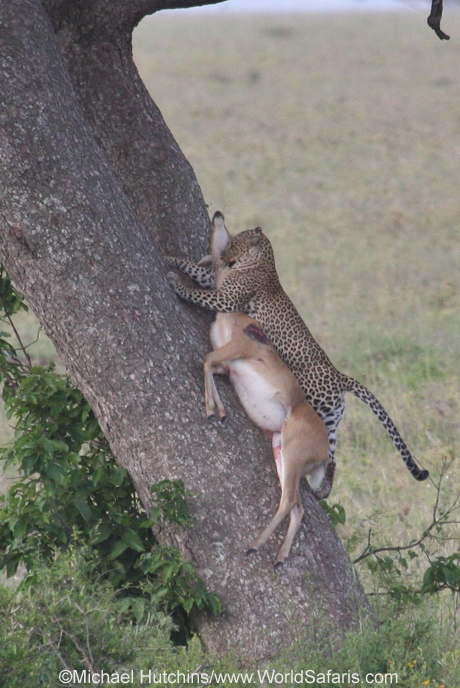Large cats, like leopards, cheetahs and lions, are among the world’s most popular animals, but people seem to hate the fact that they kill. In fact, preying on herbivores such as Thomson’s gazelles, wildebeest, Cape buffalo, zebra and warthogs, is how they make their living. Everyone has to eat to survive. I’ve always thought a great zoo educational graphic would be a photo of a pride of lions eating a freshly killed wildebeest juxtaposed with a photo of a human family eating barbequed steaks. Predatory animals are truly innocent killers simply doing what they have evolved to do. The lifestyles of big cats fascinate us, not only because they are so similar to us in many ways, but also, I think, because of the primal fear we may retain from our more dangerous past. The thought of falling prey to a large carnivore is the stuff of which nightmares and horror movies are made. The threat of death by large carnivore was a constant reality for our distant ancestors who hunted and gathered on a landscape filled with numerous predators. However, I’ve got to say that witnessing the life and death drama of predators and prey is one of the great attractions of going on safari in Africa. Seeing these powerful animals at work up close and personal is quite different from watching them on TV from the comfort of your easy chair.
In my trips to Africa, I’ve witnessed predators and predation on many occasions. I’ve had a line of female lions walk within a few feet of my vehicle in the central Serengeti, each one staring up at me briefly as they strolled casually by. I once witnessed a fight between a male and female lion while in an open vehicle in Botswana that was a little too close for comfort. Similarly, I’ve had a male lion drag the carcass of a Cape buffalo within a few feet of our vehicle and then turn to look me straight in the eye. All of these experiences sent a brief chill up my spine. On our January, 2014 trip into the Serengeti, our group was lucky enough to observe a female leopard kill an adult male bushbuck. After we sighted her resting high in a tree, the leopard suddenly got up and descended to the ground. She walked slowly and deliberately though the tall grass for about 30 yards and then sat staring intently into a bush. We watched her for about 20 minutes, then she suddenly leaped into the bush. Not more than a few seconds later, a male bushbuck appeared with the leopard riding on his back. Her teeth were firmly attached to the bushbuck’s neck, a typical killing bite that cats use to subdue their prey as quickly as possible. The bushbuck went down for a few seconds and then got up again in one final attempt to escape. But his efforts were unsuccessful and the leopard prevailed. A few minutes later, she began dragging her prize toward the nearest tree. Our skilled driver-guide had put us in an ideal position to observe the entire event. I was able to snap this photo as the powerful cat dragged her heavy prize up the tree, a strategy that leopards employ to keep their kill away from competitors, such as hyenas and lions. The group I was traveling with was amazed and counted it among the best of their many memorable experiences on the trip. The experience caused me to think deeply about predators and prey, life and death, and I wrote the following Haikus, which effectively sum up my thoughts:
Beyond compassion (5)
Nature red in tooth and claw (7)
Predators survive (5)
Cheetah and gazelle (5)
Play out their ancient drama (7)
On the open plain (5)
We cannot judge wild predators as we would ourselves. Nature is essentially amoral and cheetahs, lions and leopards are innocent killers, evolved to make a living through killing. Nothing more, nothing less. They have a right to survive and, in fact, play an essential ecological role that we often call the “circle of life.”


Recent Comments